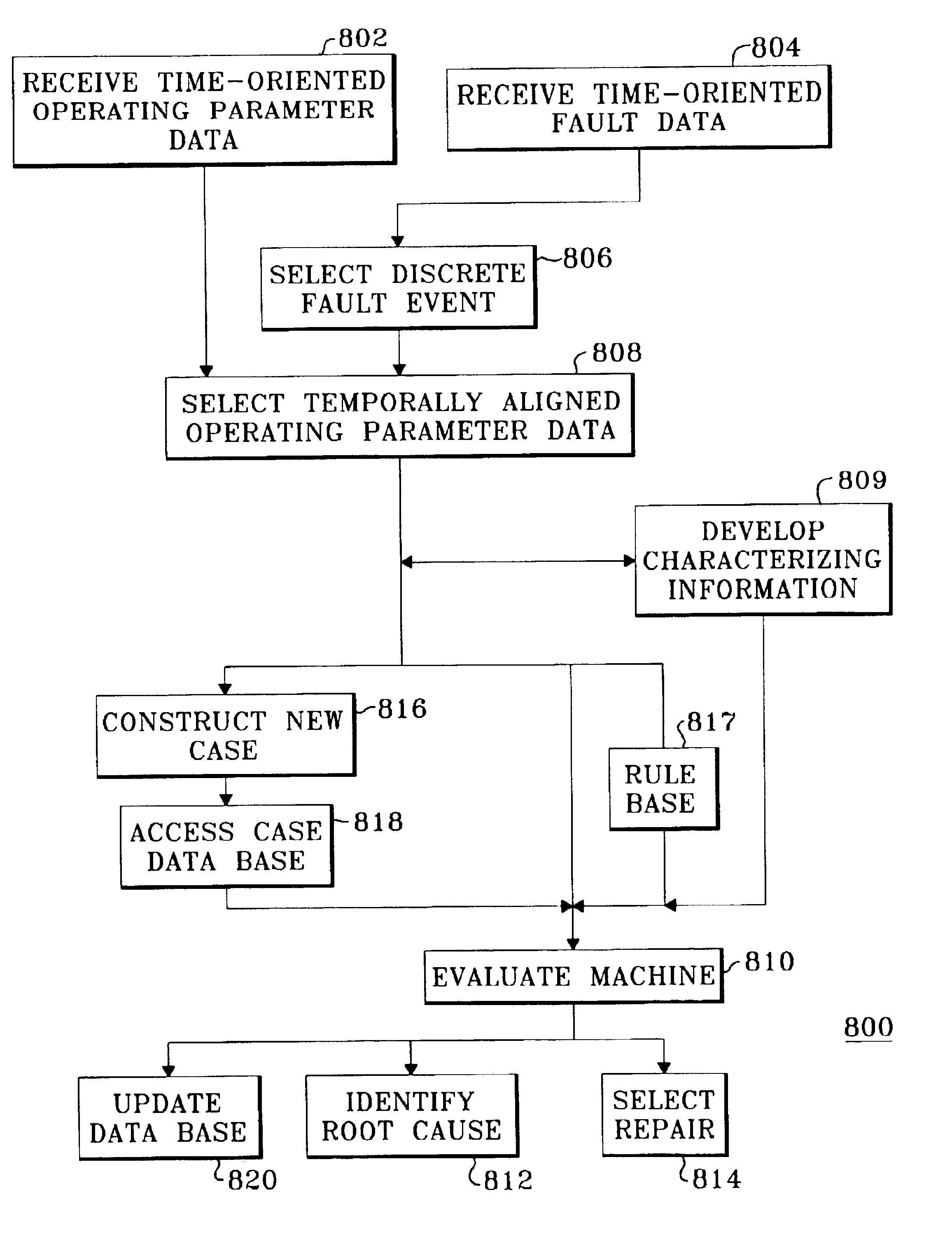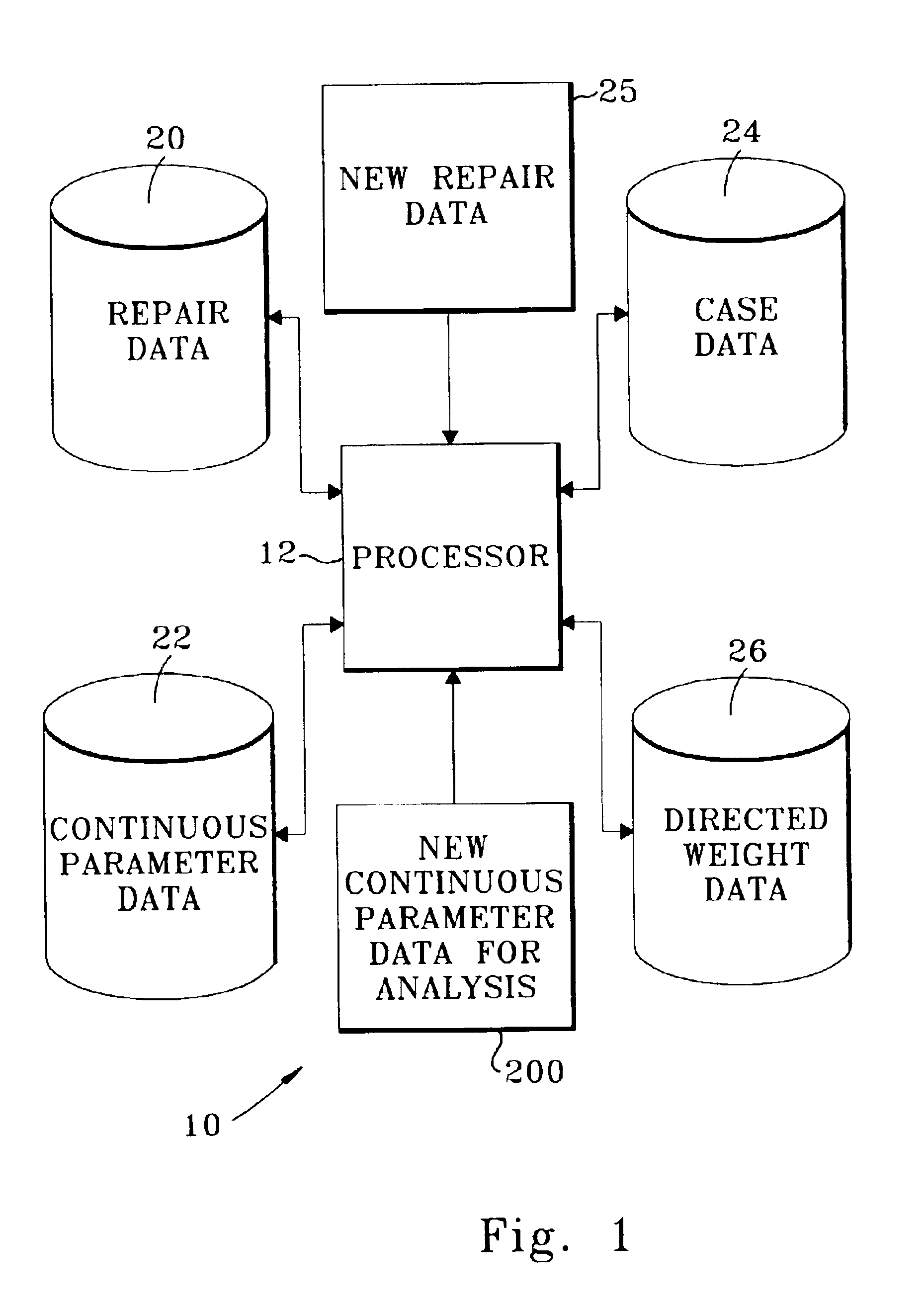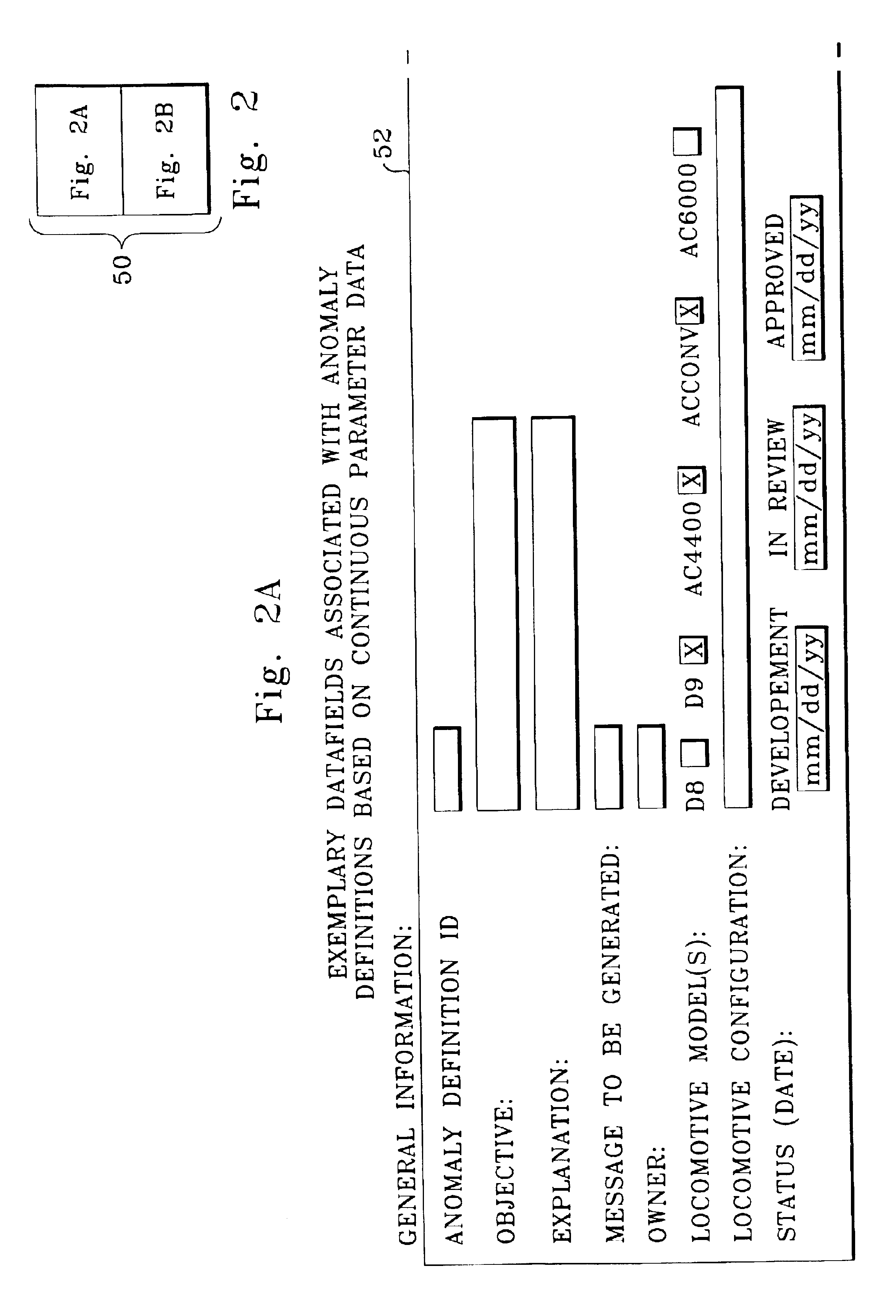Method and system for diagnosing machine malfunctions
a machine and malfunction technology, applied in the field of machine diagnostics, can solve the problem of almost impossible pre-definition and achieve the effect of avoiding the formation of the structure of the cas
- Summary
- Abstract
- Description
- Claims
- Application Information
AI Technical Summary
Problems solved by technology
Method used
Image
Examples
example 1
[0064]A fault indication of an excess current draw on a radiator fan motor is selected at step 806. Operational data is selected at step 808 to indicate the ground state of the auxiliary power supply that provides current to the fan motor at a time just prior to the time of the fault indication selected in step 806. Selectively focusing on the ground state just prior to the radiator fan motor current fault indication can provide information regarding the cause of the radiator fan motor problem; e.g. if the ground state is not normal, the excess current draw may be due to a grounding failure, but if the ground state is normal, the excess current draw may be due to a locked rotor or other such failure. The indication of the radiator fan motor excess current draw and the temporally aligned operating data regarding the ground state are then used together at step 810 to identify a likely cause of the radiator fan failure.
example 2
[0065]A fault indication of a diesel engine failure is selected at step 806. Sequential operating parameter data indicating the engine coolant temperature over a time interval shortly after the time of the logging of the fault is selected at step 808. This selectively focused subset of the temperature data gives an indication of whether the failure has progressed or whether it was caused by a transient condition. The indication of the diesel engine failure and the coolant temperature sequence after the failure indication are then used at step 810 to identify a likely cause of the failure.
example 3
[0066]A fault indication of an engine high temperature alarm is selected at step 806. At step 808 we selectively focus on operational data indicating the change in engine temperature over a one-minute interval just prior to the fault alarm. The sequential operational data from this selectively focused time interval provides an indication of a rate of change in temperature, i.e. a slope or first derivative of the operating parameter. Knowing such first derivative information can provide an indication of whether the fault was due to a catastrophic failure of the cooling system. The indication of high temperature and the first derivative of the temperature data are used at step 810 to identify a likely cause of the fault with a higher probability of successfully identifying the actual failure than would otherwise be possible by using just the fault indication data.
[0067]The analyses of fault log data in method 800 of FIG. 11 may further include an automated case analysis process as des...
PUM
 Login to View More
Login to View More Abstract
Description
Claims
Application Information
 Login to View More
Login to View More - R&D
- Intellectual Property
- Life Sciences
- Materials
- Tech Scout
- Unparalleled Data Quality
- Higher Quality Content
- 60% Fewer Hallucinations
Browse by: Latest US Patents, China's latest patents, Technical Efficacy Thesaurus, Application Domain, Technology Topic, Popular Technical Reports.
© 2025 PatSnap. All rights reserved.Legal|Privacy policy|Modern Slavery Act Transparency Statement|Sitemap|About US| Contact US: help@patsnap.com



